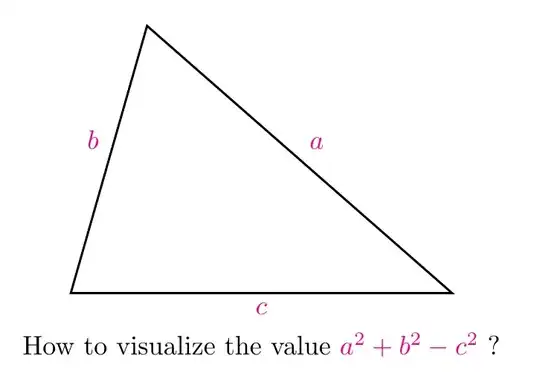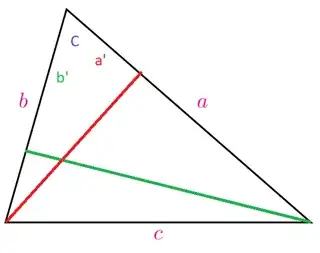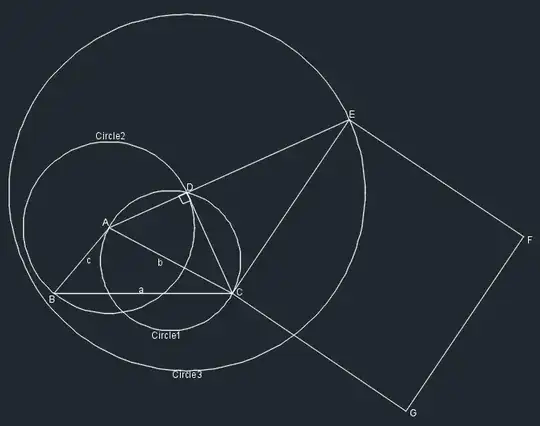Let $a$, $b$, and $c$ be three lengths of sides of a triangle, that is, $a+b>c$.
How can we visualize the value $a^2+b^2-c^2$ as length of some segment or area, ... constructed from the triangle $ABC$ ?
The value appears in some context, for example Law of Cosine, barycentric coordinate of orthocenter.
I searched, and tried myself for a while, but still have no clues.



